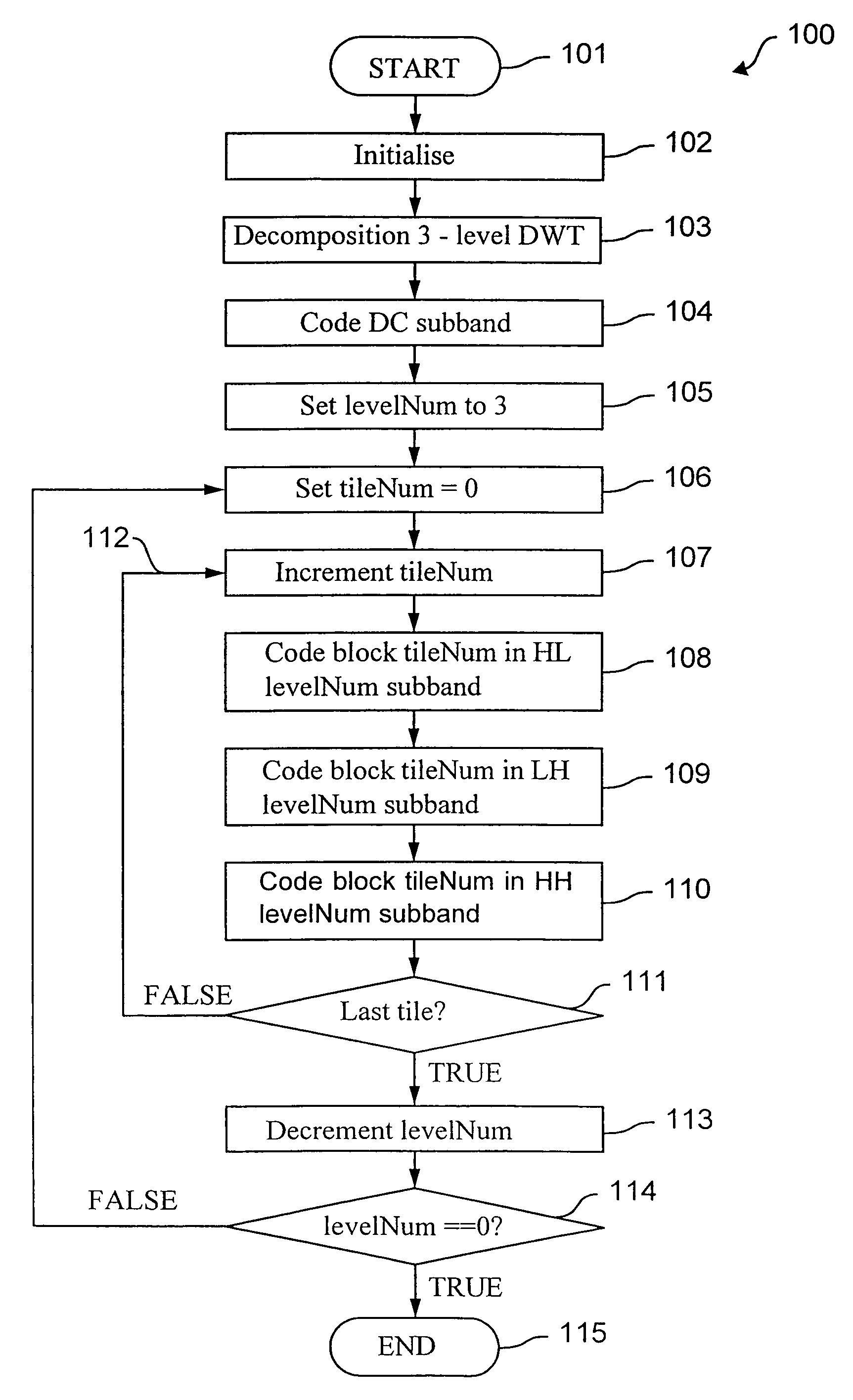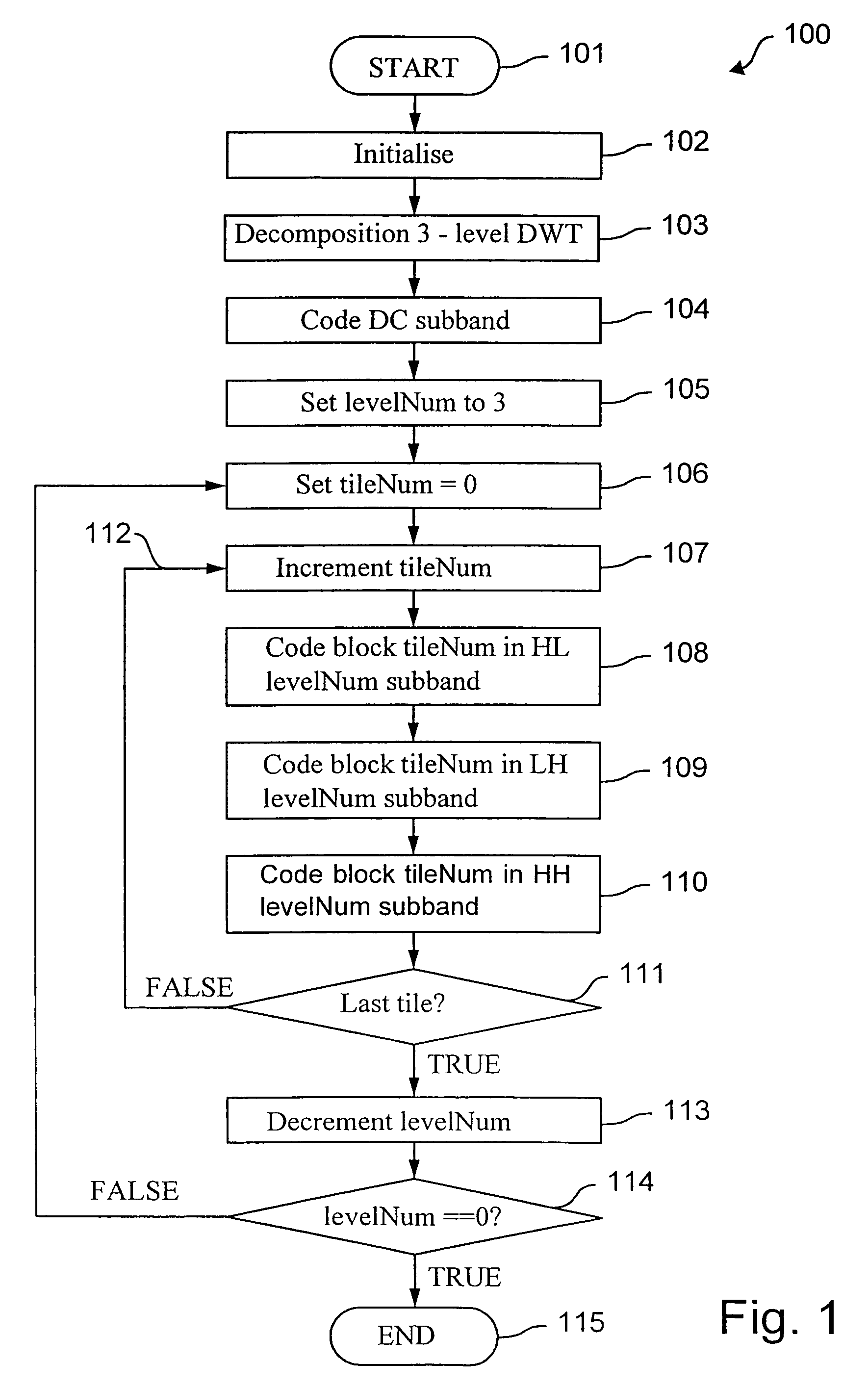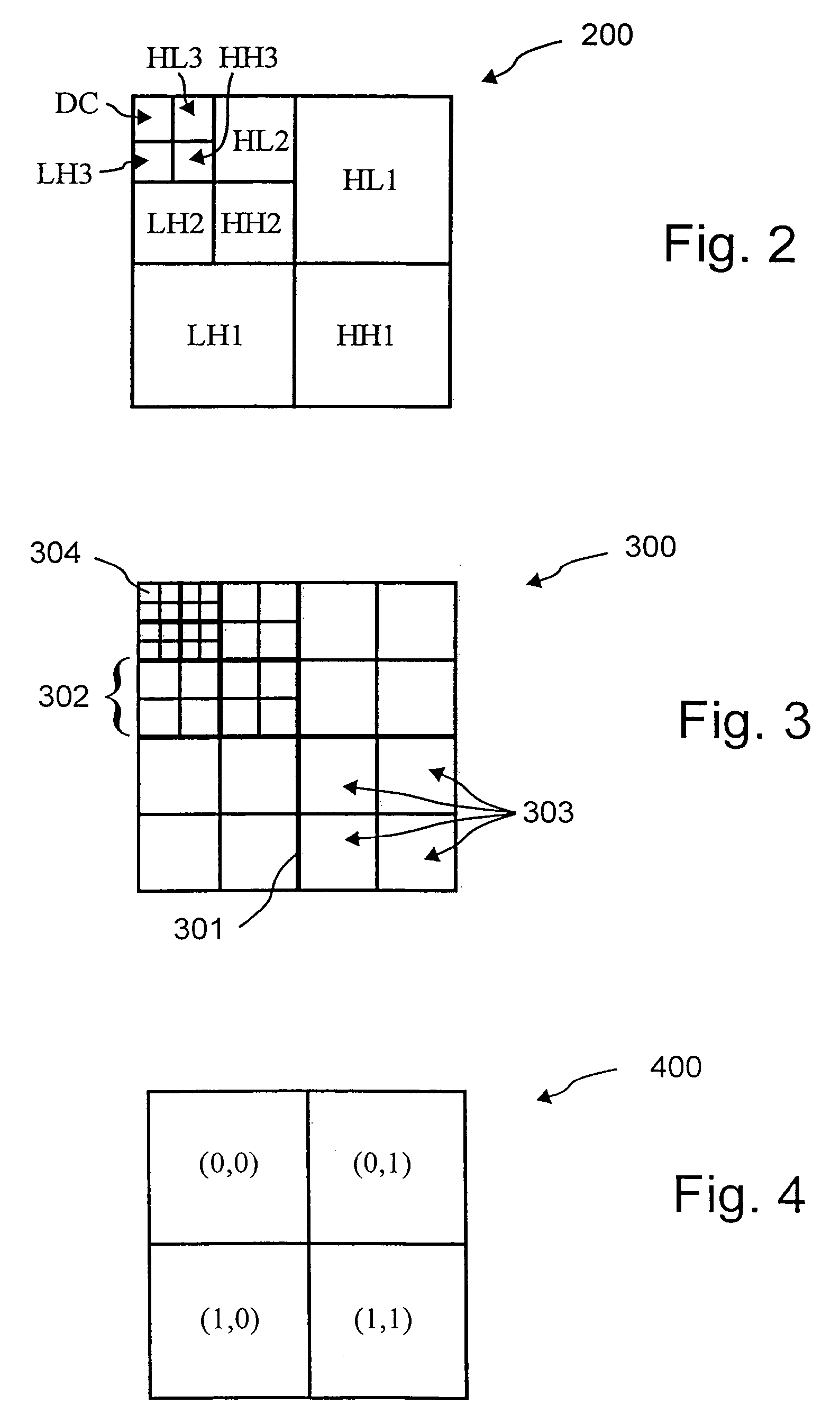Image coding method and apparatus for localized decoding at multiple resolutions
a decoding method and image technology, applied in the field of digital image compression, can solve the problems of not being able to decode a very low resolution version of the image from a disk, not being able to read just the dc coefficients from baseline mode coded jpeg images, and being unable to allow such an efficient random access
- Summary
- Abstract
- Description
- Claims
- Application Information
AI Technical Summary
Benefits of technology
Problems solved by technology
Method used
Image
Examples
Embodiment Construction
[0034]Referring to FIG. 1, there is shown a flow diagram of an encoding process 100 in accordance with the preferred embodiment of the present invention. At a starting step 101, a digital image is input and an initialisation step 102 for the encoding process 100 is performed. The initialisation step 102 sets encoding parameters, such as compression quality and a compression factor for the digital image, to desired values.
[0035]Next, a decomposition step 103 is executed which performs a multi-level subband decomposition of the image. The multi-level subband decomposition of the image provides a plurality of coefficients, typically, partitioned into a plurality of blocks (or subband). The coefficients provide a non-redundant multiple resolution (or size) frequency domain representation of the digital (spatial domain) image.
[0036]In this context non-redundant refers that a number of values at a first representation of an image is substantially equal to the number of values required for...
PUM
 Login to View More
Login to View More Abstract
Description
Claims
Application Information
 Login to View More
Login to View More - R&D
- Intellectual Property
- Life Sciences
- Materials
- Tech Scout
- Unparalleled Data Quality
- Higher Quality Content
- 60% Fewer Hallucinations
Browse by: Latest US Patents, China's latest patents, Technical Efficacy Thesaurus, Application Domain, Technology Topic, Popular Technical Reports.
© 2025 PatSnap. All rights reserved.Legal|Privacy policy|Modern Slavery Act Transparency Statement|Sitemap|About US| Contact US: help@patsnap.com



